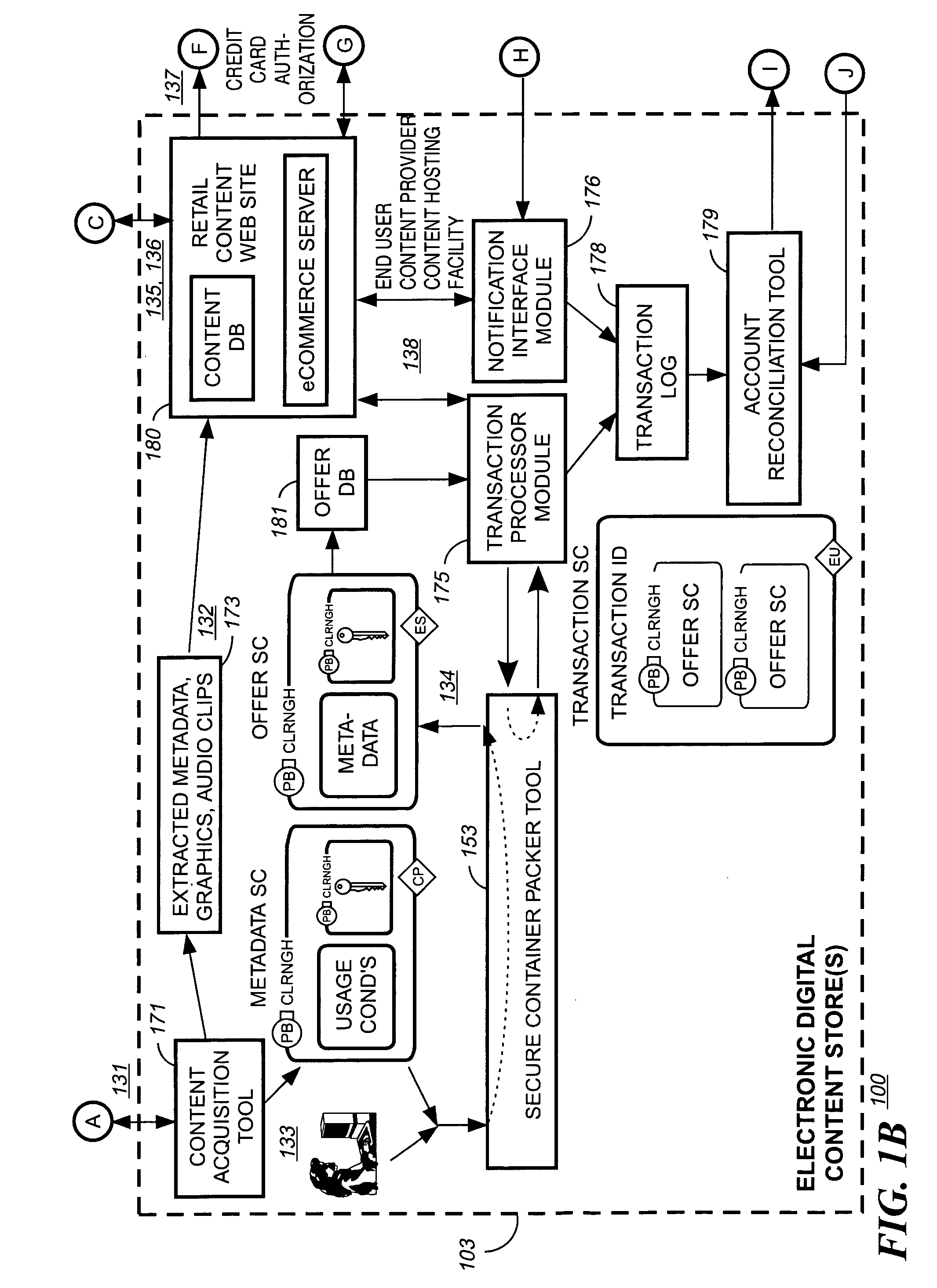Updating usage conditions in lieu of download digital rights management protected content
a digital rights management and usage condition technology, applied in the field of electronic commerce, can solve the problems of unauthorized re-distribution of digital content by end-users, slow adoption by owners and publishers of valuable digital content by the internet, and unauthorized copying or piracy of digital content by owners
- Summary
- Abstract
- Description
- Claims
- Application Information
AI Technical Summary
Problems solved by technology
Method used
Image
Examples
Embodiment Construction
[0043] A Table of Contents is provided for this present invention to assist the reader in quickly locating different sections in this embodiment.
I. Secure Digital Content Electronic Distribution System
[0044] A. System Overview [0045] 1. Rights Management [0046] 2. Metering [0047] 3. Open Architecture
[0048] B. System Functional Elements [0049] 1. Content Provider(s) [0050] 2. Electronic Digital Content Store(s) [0051] 3. Intermediate Market Partners [0052] 4. Clearinghouse(s) [0053] 5. End-User Device(s) [0054] 6. Transmission Infrastructures
[0055] C. System Uses
II. Cryptography Concepts and Their Application to the Secure Digital Content Electronic Distribution System
[0056] A. Symmetric Algorithms
[0057] B. Public Key Algorithms
[0058] C. Digital Signature
[0059] D. Digital Certificates
[0060] E. Guide To The SC(s) Graphical Representation
[0061] F. Example of a Secure Container Encryption
III. Secure Digital Content Electronic Distribution System Flow
IV. Rights Managemen...
PUM
 Login to View More
Login to View More Abstract
Description
Claims
Application Information
 Login to View More
Login to View More - R&D
- Intellectual Property
- Life Sciences
- Materials
- Tech Scout
- Unparalleled Data Quality
- Higher Quality Content
- 60% Fewer Hallucinations
Browse by: Latest US Patents, China's latest patents, Technical Efficacy Thesaurus, Application Domain, Technology Topic, Popular Technical Reports.
© 2025 PatSnap. All rights reserved.Legal|Privacy policy|Modern Slavery Act Transparency Statement|Sitemap|About US| Contact US: help@patsnap.com



